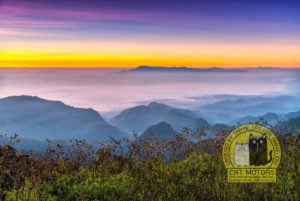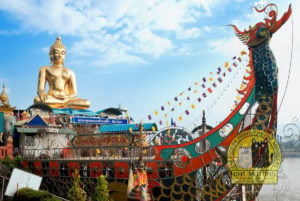10 Best Things To Do And See In And Around Wat Umong
Wat Umong, also known as the “Tunnel Temple,” is a historically significant Buddhist temple nestled in the tranquil forest setting of Chiang Mai, Thailand. With a rich heritage dating back to the 13th century, this unique temple is renowned for its underground tunnels and ancient stupa. Distinguished from the similarly named “Wat Umong Maha Thera Chan” located within Chiang Mai’s old city moat, the Wat Umong complex offers a serene atmosphere for meditation, reflection, and exploration of its impressive collection of Buddha statues, traditional Thai artwork, and well-preserved ancient structures. Visitors can also enjoy feeding the fish and turtles in the temple’s peaceful pond and strolling through the lush green surroundings, which are adorned with thought-provoking proverbs on trees.
Wat Umong is a beautiful 700-year-old Buddhist temple that offers a peaceful atmosphere and stunning natural surroundings, including underground tunnels and a forested area. Visitors can explore the tunnels, participate in traditional ceremonies and practices, and even help feed the resident turtles.
Wat Umong also offers classes in yoga and wellness practices and opportunities to learn about the history and traditions of Thailand. The temple is also known for its stunning gardens, which are the perfect place to relax and take in the peaceful surroundings. So whether you want to spend a few hours or an entire day at the temple, the following are ten of the best things to see and do at Wat Umong.
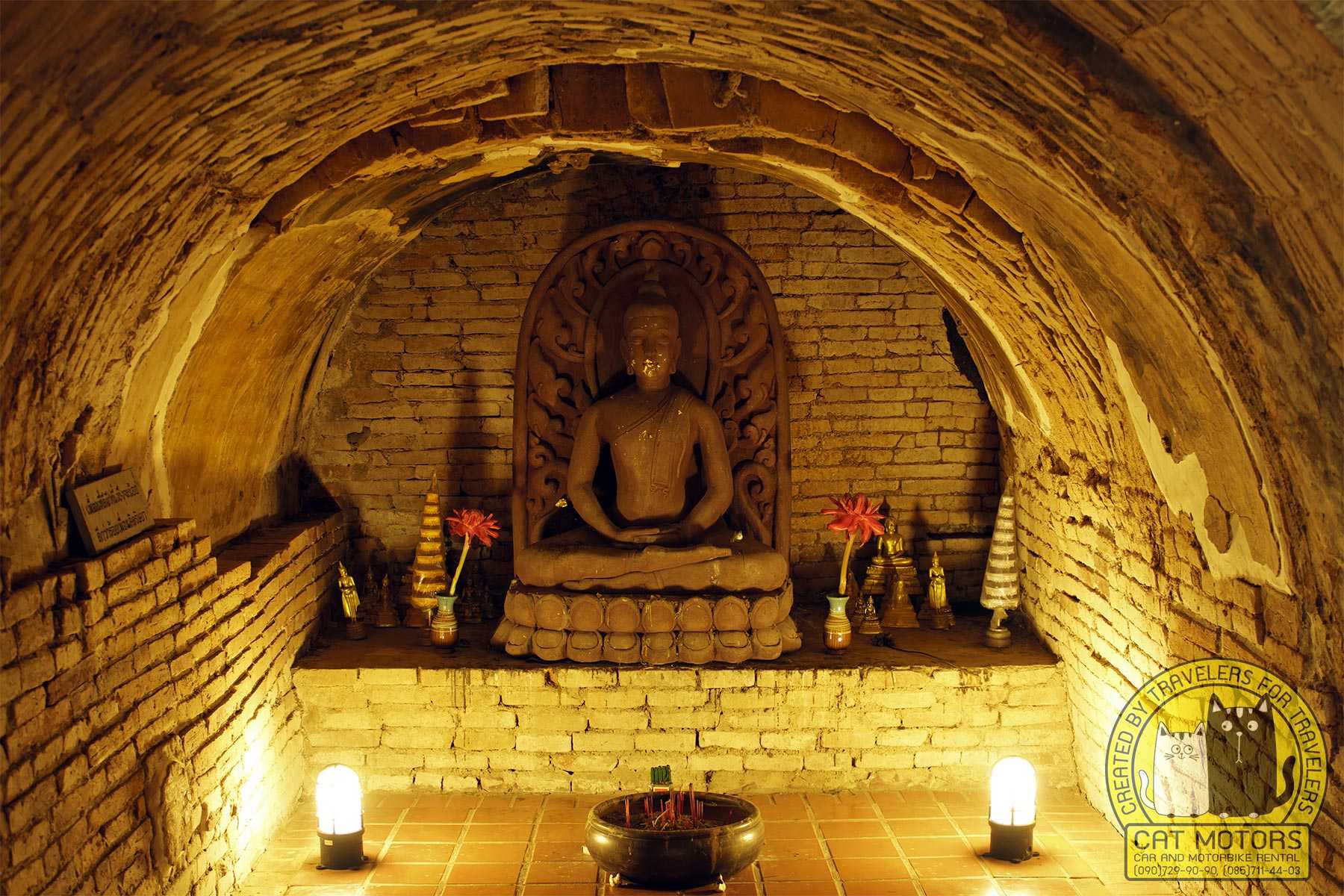
A Travel Guide To The Best Wat Umong Activities
Wat Umong Suan Phutthatham, also known as Werukattatharam or Forest Temple, is a beautiful and peaceful Buddhist temple with a long and fascinating history. According to local lore, the temple was founded in the 13th century. Founded during King Mangrai’s reign and was offered to a monk named Thera Jan, who was seeking a place to meditate in seclusion.
To create this retreat, Thera Jan had a series of underground tunnels dug into a hillside, and it was in these tunnels he spent much of his time meditating and studying. Over the centuries, Wat Umong has grown and evolved, and today it is a popular destination for both locals and tourists alike. In 1948, the temple underwent restoration and reopened as a location for Buddhist teachings and meditation.
Tourists from around the world visit the temple to explore the underground tunnels, participate in traditional Buddhist ceremonies and practices, and learn about Thai culture and history. So if you’re looking for a thrilling tour full of cultural discovery and historical experiences, continue reading to find out the top ten things to do in and around Wat Umong.
Explore The Tunnels
One of the many fascinating features of Wat Umong is its series of tunnel temples, originally built as a place for monks to meditate in seclusion. Today, these tunnels are open to visitors and offer a captivating glimpse into the history and traditions of the temple.

Tunnel Temple is situated in a remote forest with a complex system of tunnels. Free-roaming deers, Saffron-robed monks, and ponds teeming with fish and turtles all call the 15-acre (6-hectare) temple home. The so-called “talking trees” are also decorated with signs that include proverbs.
Come and visit Wat Umong, just a short drive or bike ride from the airport and city center. When you arrive, park in the designated area and take a short walk to the pagoda and the entrance to the underground tunnels. It’s a convenient and easy trip that will transport you to a peaceful and serene environment.
Small stores selling snacks and skewers are popular in this area, along with trinkets rich in historical culture. As you explore the tunnels, you’ll discover several small shrines and statues, each with its own significance. The tunnels are cool and dimly lit, providing a peaceful and contemplative atmosphere.
Take Part In Traditional Buddhist Ceremonies And Practices
Wat Umong is a functioning Buddhist temple, and as such, it offers several opportunities for visitors to participate in traditional ceremonies and practices. This might include participating in a meditation session, chanting with the monks, or making an offering at one of the shrines. These activities provide a unique opportunity to learn more about Buddhism and connect with the temple’s spiritual practices.
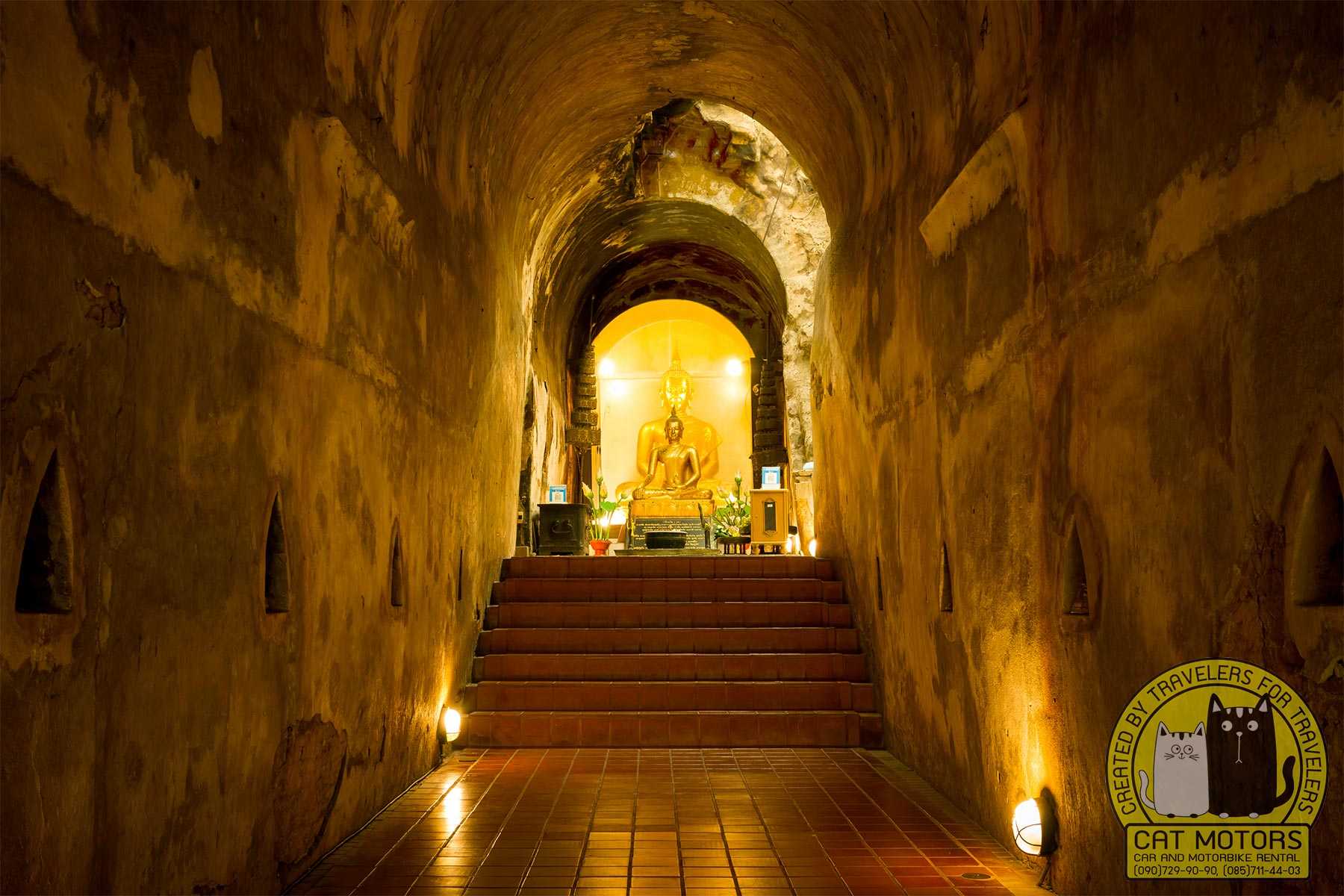
There are many reasons why someone may want to take part in traditional Buddhist ceremonies and practices while visiting Wat Umong or Wat Chiang Man. Participating in these activities can be a deeply meaningful and enriching experience. Buddhism is a religion that emphasizes mindfulness and the present moment, and participating in traditional ceremonies and practices can help bring these concepts to life.
In addition, participating in these activities can also provide an opportunity to learn more about Buddhism and its teachings. By participating in meditation sessions, chanting with the monks, or making offerings at the shrines, visitors can gain a deeper understanding of the principles and practices of this ancient religion.
Overall, participating in traditional Buddhist ceremonies and practices at Wat Umong can be an enriching experience that allows visitors to learn more about this fascinating religion and connect with the local culture.
Join A Class In Yoga Or Another Wellness Practice
In addition to its traditional Buddhist practices, Wat Umong also offers a range of wellness classes and activities. These might include yoga classes, tai chi, or other practices that focus on mindfulness and relaxation. Whether you are a practiced yogi or a beginner, you’ll find something to suit your interests and ability level.
Wat Umong also includes a meditation center and is a fabulous meditation retreat for tourists. In addition, various half-day tours include mediational wellness practices at Wat Umong, which includes watching the sunset over Chiang Mai.
It is well known that meditation improves the flow of happy emotions and helpful thoughts. Therefore, regularly meditating for even a few minutes can have a significant impact, and tourists find the Buddhists at Wat Umong as some of the most friendly and intuitive teachers.
Learn About Thai Culture And History
Wat Umong is more than just a Buddhist temple; it is also a place where visitors can learn about the history and culture of Thailand. The temple offers several classes and lectures on topics such as the Thai language, traditional arts and crafts, and the history of Buddhism in Thailand. These classes provide a unique opportunity to delve deeper into the culture and traditions of this fascinating country.
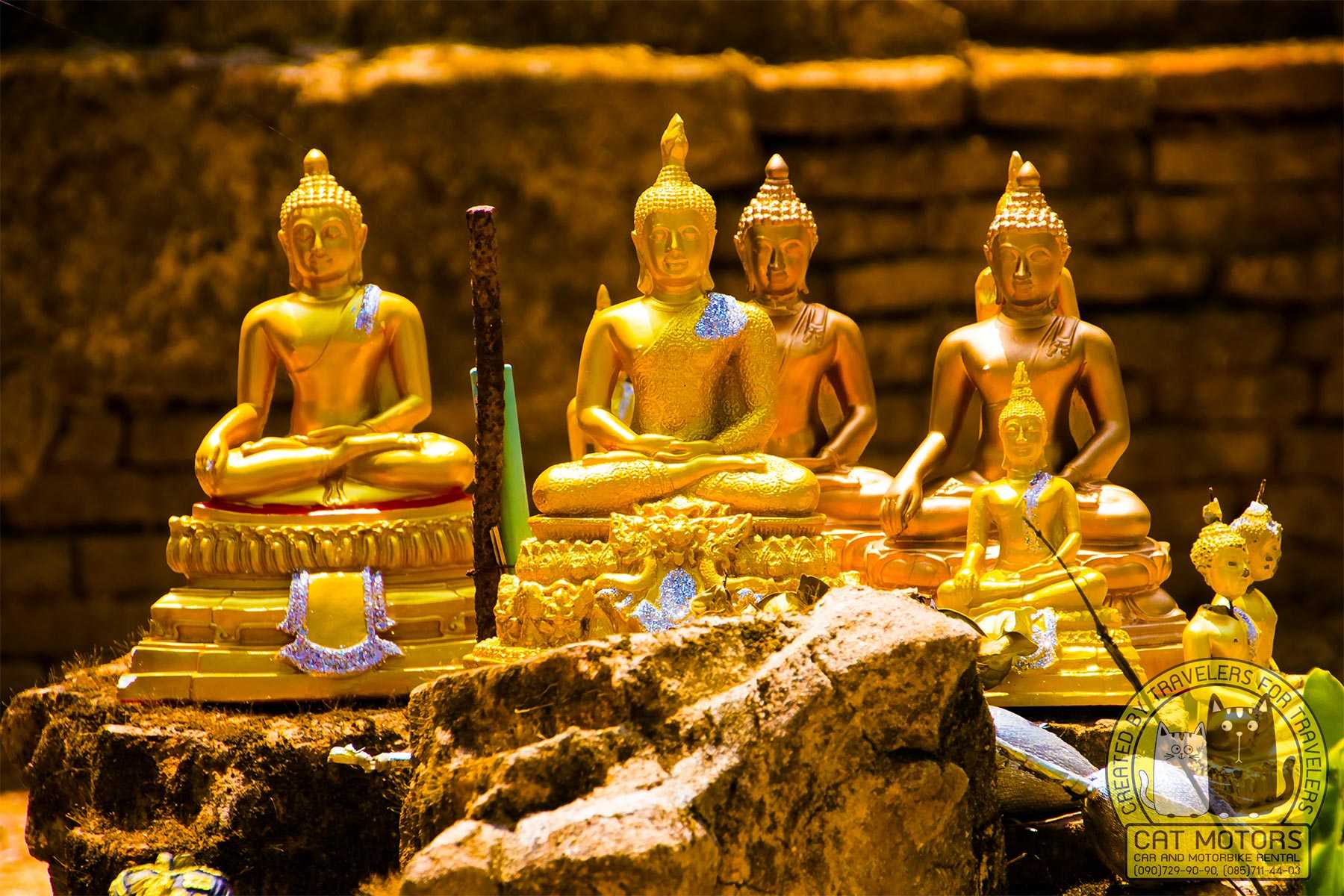
Wat Umong is home to several educational resources related to Thai history. The Wat Umong Library, located in the main temple building, contains a large collection of books and manuscripts on Thai history, culture, and religion.
Visitors can also explore the archaeological remains of the old city of Sukhothai and the surrounding area and the Wat Umong museum, which houses artifacts and relics from the area’s past. Additionally, Wat Umong offers educational tours and lectures on various aspects of Thai history and culture.
Feed The Resident Turtles
One of the most popular activities at Wat Umong is feeding the temple’s many resident turtles daily. With some turtles rumored to be as old as some ancient Buddhists, visitors can watch as they are fed and even help with the feeding.
This activity is a great way to learn more about these fascinating creatures and to see them up close. Besides turtles, other species that love to be fed include catfish, ducks, and more.
Experience Authentic Thai Food And Beautiful Gardens
Wat Umong is known for its beautiful gardens, which are the perfect place to relax and take in the peaceful surroundings. The gardens are home to various plants and flowers, including lotus ponds, bamboo groves, and fruit trees. The gardens offer a peaceful and serene setting for visitors to relax and enjoy the natural beauty.

So whether you want to sit and meditate or just enjoy a leisurely stroll, the gardens at Wat Umong are a must-see. After sightseeing in the garden, you may want to indulge in authentic Thai cuisine with a Buddhist twist. Some of the popular eatery destinations include:
- The Good View Restaurant: Located just a few minutes drive from Wat Umong, The Good View Restaurant offers a variety of dishes, including Thai, Western, and vegetarian options. The restaurant has a stunning outdoor seating area with views of the surrounding mountains, including Suthep mountain.
- Han Teung Jiang Mai: Han Teung Jiang Mai offers a range of meaty alternatives, fresh juices, and smoothies. The restaurant has a family-friendly atmosphere, making it an excellent place to cool off after a day of exploring the temple.
Visit The Wat Umong Chedi
The Wat Umong Chedi is worth a visit for its unique architecture, peaceful atmosphere, and beautiful setting. The large chedi, or stupa, is an important part of Thai temple architecture, and this particular structure is an excellent example of the craftsmanship involved.

Lush gardens surround Wat Umong Chedi, and its location within the walls of an ancient forest temple makes it an ideal place for meditation. Visitors can take a peaceful walk around the chedi, admire its intricate carvings, and soak up the atmosphere of this special place.
Sightsee The Temple’s Small Museum
If you are visiting Wat Umong, the museum offers a unique occasion to learn more about the history and traditions of Buddhism and the temple itself. The museum is home to a collection of artifacts, including statues, manuscripts, and other items donated to the temple over the years. These items provide insight into the cultural and religious practices of the Buddhist community and give visitors a glimpse into the past.
In addition to the artifacts, the museum also has displays and exhibits explaining each item’s history and significance. This can be a great way to learn more about Buddhism and the temple traditions interactively and engagingly.
Overall, visiting the museum at Wat Umong is a chance to deepen your understanding and appreciation of Buddhism and the temple’s role in the local community. It can also be a peaceful and educational activity to enjoy while taking a break from exploring the rest of the temple grounds.
Visit The Chiang Mai Night Bazaar
If you’re looking for a stirring and unique shopping experience not far from the temple, the Chiang Mai Night Bazaar is the perfect destination. With its vibrant atmosphere and variety of goods, you’re sure to find something to bring back home. The night bazaar has everything from local handicrafts and traditional clothing to international brands and souvenirs.
In addition to shopping, you can also enjoy the delicious street food stalls and live music, a staple of the night bazaar. So whether you’re looking to pick up a few souvenirs or just want to immerse yourself in Thai culture, the Chiang Mai Night Bazaar is a must-visit destination.
While Wat Umong is a peaceful and spiritual place, the night bazaar is a bustling and energetic place that offers a different perspective on daily life in Thailand.
At the night bazaar, visitors can see local artisans selling their handmade crafts, trying various street food dishes, and see traditional dance performances. It’s an excellent way to get a sense of Thai culture’s diversity and richness and immerse oneself in the local way of life.
Go On A Scenic Hike Through The Nearby Forested Area
Hiking near Wat Umong is a great way to get out and explore Northern Thailand. Wat Umong is an ancient temple complex nestled in a forest and surrounded by mountains. And the trails around Wat Umong offer some of the best views and experiences in all of Thailand.
The trails are well-marked and easy to follow, making it a great option for novice to intermediate hikers. There are a variety of routes to choose from, including:
- Doi Pui-Mae Taeng Access Road – a scenic road offers stunning views of the surrounding countryside. The road also features a variety of short and easy hikes, ideal for beginners.
- Mae Taeng River – a popular spot for kayaking and rafting and is also a great place to hike.
- Mae Sa Waterfall – the waterfall is located a short distance from Wat Umong and is a popular spot for swimming and picnicking.
Visit other worthy temples nearby
Wat Ram Poeng is one of the city’s oldest and most important temples and is part of the Maha Nikaya Buddhist sect. The temple is known for its meditation center and is home to many experienced meditation practitioners. The temple was initially built in the early 16th century and has been restored several times since then. The temple complex has a spacious meditation hall, library, and many other facilities. The temple also hosts regular meditation retreats and other events.
Wat Suan Dok – the Buddhist temple was built in the late 14th century by King Kuena and is one of the most important temples in the city. The temple complex is surrounded by a wall. It contains several vital structures, including a large central pagoda, a library, an ordination hall, and a meditation hall. The temple is well known for its extensive collection of white chedis, built to house the ashes of the former rulers of Chiang Mai. The temple is a popular destination for visitors to Chiang Mai and is used for various religious ceremonies.
Wat Pha Lat – the temple was built in the 13th century and is believed to have been a royal temple during the Lanna period. It is one of the oldest temples in Chiang Mai and is also an important pilgrimage site for Buddhists.
Wat Doi Suthep is one of the most important temples in the city and is often considered the most sacred. The temple was built in the 14th century and is perched on a mountain overlooking the town. The temple is home to a giant golden chedi, which contains a piece of bone belonging to the historical Buddha. The temple also includes several other structures, including a library, an ordination hall, and a meditation hall. The temple is a popular destination for locals and tourists and is used for various religious ceremonies and festivals.
Conclusion
The ancient Wat Umong has been a pilgrimage site for centuries, and it continues to be one of the most captivating and inspiring places to visit in Northern Thailand. With its stunning architecture, serene atmosphere, and rich history, the temple is an unforgettable destination for both spiritual seekers and casual tourists.
YT Review
FAQ
Wat Umong is a Buddhist temple complex located in the foothills of Doi Pui mountain, just outside the city of Chiang Mai in Thailand. The main feature of this temple complex is a 700-year-old tunnel system that visitors can explore. Inside, visitors will find different sculptures, murals and statues dedicated to Lord Buddha and other figures of Buddhism. It is also a popular destination for foreign tourists looking to explore a unique insight into traditional culture and history of Thailand.
Visitors to Wat Umong can expect to experience a serene atmosphere, where they can marvel at the beauty of the architecture and intricate details of the sculptures and mural paintings found throughout the complex. Visitors will also see several shrines dedicated to various Buddhist deities, as well as an ancient stupa representing the height of Buddhist glory. While exploring the tunnels, visitors will find plenty of statues and murals that depict Lord Buddha himself, as well as several stories related to Buddhism.
Wat Umong is open from 6am to 8pm every day. Visitors should dress respectfully and speak quietly in order to maintain the peaceful atmosphere. A small entrance fee is required to enter the complex, but it is well worth the price to explore the ancient temple complex.
Yes, there are many guided tours available at Wat Umong. These tours are usually conducted in English and provide visitors with insight into the history and culture of the temple complex. Tour guides can explain the significance of the sculptures, murals and statues found inside the temple complex, as well as provide insight into the spiritual traditions associated with Buddhism. Many of the tours also include a visit to the nearby Doi Suthep mountain, which is regarded as one of the most sacred sites of Buddhism in Thailand.
The best time to visit Wat Umong is during the cooler months of the year, from October to February. In these months, the weather is mild and the views of the surrounding countryside from the temple complex are particularly stunning. However, visitors should be aware that the temple complex is popular year-round and can get quite crowded during peak periods.
Yes, there is plenty of accommodation near Wat Umong. There are many hostels and guest houses nearby that provide comfortable and affordable lodging options, as well as luxury resorts located in the nearby vicinity. Many of these accommodation options are situated close to the temple complex, enabling visitors to explore the area without having to travel too far
Sure, there are several restaurants located in the vicinity of Wat Umong. Many of these eateries serve local Thai cuisine such as Pad Thai, Tom Yum and other delicious dishes. There are also several international restaurants located in the area, providing visitors with the opportunity to sample global cuisine.
Wat Phra That Doi Suthep is a famous temple with a stunning view of Chiang Mai, located in Doi Suthep-Pui National Park.
Yes, the Doi Suthep-Pui National Park offers hiking trails, waterfalls, and the opportunity to observe various species of flora and fauna.
The Chiang Mai Old City, with its ancient temples and well-preserved architecture, is an excellent destination for exploring the rich history and culture of the region. You can also visit the famous Chiang Mai arts village Baan Kang Wat.
The Chiang Mai University Art Museum is a great option to experience contemporary and traditional Thai art.
The Chiang Mai Night Bazaar and the Sunday Walking Street Market are popular markets where you can find local handicrafts, street food, and a lively atmosphere.
Discover the beauty and culture of Northern Thailand with our detailed travel guides. Highlighting the top scenic routes and local attractions, our guides ensure you experience the best the region has to offer. Begin your journey by visiting our motorcycle rental in Chiang Mai. Don’t forget to review our terms and conditions for a seamless experience. With these resources, you can explore charming villages and scenic mountain trails with confidence.
Our travel advice sections provide essential tips on staying safe and enjoying your journey to the fullest. Learn about the best times to visit major attractions, participate in cultural events, and get recommendations on the best local cuisine. These insights will make your trip richer and more enjoyable. Let us help you uncover the true essence of Northern Thailand, ensuring a safe and memorable adventure filled with unique experiences and stunning scenery.
Was this post useful for you?
You can rate it by clicking on a star
Average rating / 5. Vote count:
No votes so far! Be the first to rate this post.
We are sorry that this post was not useful for you!
Let us improve this post!
Tell us how we can improve this post?
- Author: Krit Sorenser
- Updated: March 26, 2025
- No Comments


